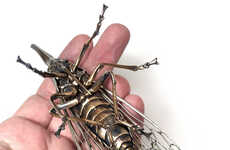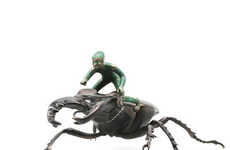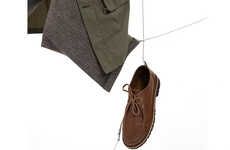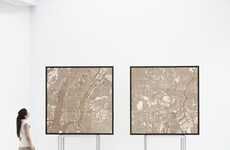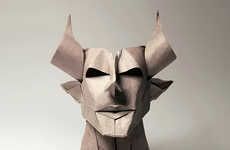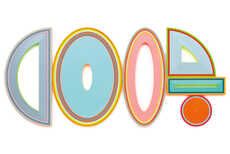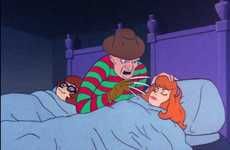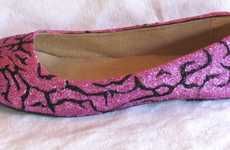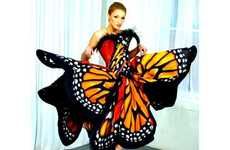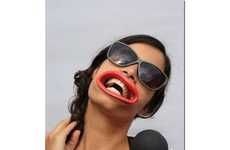
Michael Mapes Turns Portraiture into Specimen Studies
Andrew Robertson — May 4, 2012 — Art & Design
References: room62 & beautifuldecay
Michael Mapes borrows from the entomological practice of pinning bugs to a board in this collection of human portraits. The artist uses several specimen cutouts consisting of human body parts and carefully arranges them in order to create a visually stunning piece of work.
The collection is at once both provocative and alluring. The composition of the illustration is impressive in its intricate layout; however, the format in which the visual representation is delivered (scientific specimen) is slightly off putting. The work recalls impressions of mad science and human experiments, turning scientist into specimen.
It's interesting to see how the human body can be taken apart and categorized into individual segments, forcing the audience to consider the intricacies of their own physical bodies.
The collection is at once both provocative and alluring. The composition of the illustration is impressive in its intricate layout; however, the format in which the visual representation is delivered (scientific specimen) is slightly off putting. The work recalls impressions of mad science and human experiments, turning scientist into specimen.
It's interesting to see how the human body can be taken apart and categorized into individual segments, forcing the audience to consider the intricacies of their own physical bodies.
Trend Themes
1. Specimen Studies - The entomological practice of pinning down parts of an individual's body creates a visually stunning format of human portraiture that provokes thought about human physicality.
2. Mad Science Impressions - Using the dissected parts of human beings to create a composite portrait recalls the image of mad science experiments and offers an opportunity for art and science to create a hybrid medium.
3. Intricate Composition - Michael Mapes' impressive layout and arrangement of his composite portraits demonstrates a trend of creating visually stunning art from dissected human specimens.
Industry Implications
1. Fine Art - Artists can experiment with the trend of dissecting human specimens to create hybrid works of art that merge the fields of art and science.
2. Science Education - Dissecting and categorizing human body parts for art can be used as a teaching tool to educate students on human anatomy and physiology.
3. Medical Research - Scientists and doctors can use the trend of dissecting human specimens for art to study the intricate workings of the human body in a visually appealing way.
4.5
Score
Popularity
Activity
Freshness


